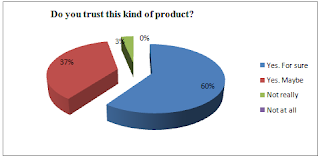Week 7 (FYP 1)
PROJECT TITLE CONFIRMATION
This week is my progress about information my project FYP in FYP UnikL BMI website after Sir Syamsul and Head of Section approved my proposal. The title of my project is development of Gas Leakage detector for Home Appliance.
LITERATURE REVIEW
Journal 2
Today, I will share some information LED (Light Emmitting Diode). The history of LED light, how the LED work and advantage of LED light.
History of LED light.
Light-emitting diode is an electric component that emits light when connected to direct current. It works on electromagnetism principle and can emit light in visible specter as well as in infrared and ultraviolet. They have characteristically low energy consumption, small size, longer lifetime and faster switching than incandescence lamps and because of that, they have a wide palette of applicability.
In 1907, British experimenter in Marconi labs Henry Joseph Round noticed for the first time that when a potential of 10volts is applied to carborundum (silicon carbide) crystal, it emits yellowish light. However, first to investigate it and to propose a working theory was Oleg Vladimirovich Losev from Russia. In 1927, Oleg published a paper “Luminous carborundum detector and detection effect and oscillations with crystals“.
For decades no progress was made for different reasons. Rubin Braunstein that worked at Radio Corporation of America, reported in 1955 that some simple diodes emit infrared light when connected to a current. In 1961, Gary Pittman and Bob Biard from Texas Instruments found that that gallium-arsenide diode emits infrared light every time it is connected to current. The same year they received patent for infrared LED. Nick Holonyak Jr., employed in General Electric, developed in 1962 first light-emitting diode that emitted light in the visible part of the frequency range. It was a red LED. In 1972, M. George Craford, who was a graduate student of Holonyak, invented the first yellow LED and a brighter red LED. Thomas P. Pearsall developed high brightness light-emitting diode in 1976, for use with fiber optics in telecommunications. Shuji Nakamura of Nichia Corporation made first blue LED in 1979 but it was too expensive for commercial use until 1994. Light emitting diodes can now be made in one or in more colors.
How the LED work?
An LED, or light-emitting diode, is a light source based on a semiconductor - materials that are neither pure conductors nor insulators but have an electrical conductivity somewhere in between. When a voltage passes through the LED, electrons recombine with holes in the semiconductor, emitting light in the process.
Advantage of LED
- Emit more light per watt that incandescent lamps
- Much smaller
- On/off time is much shorter than of the other types of electric light sources (they are quick)
- Lifetime is much longer and they are much more difficult to damage.
- Flaws are high price per lumen.
- High dependence of the outside temperature.
- Easy overheating if the outside temperature is too high and there is no heat sink.
Credits to: Ankit, Babalu, Atul and Ameer (April - June 2015)"Microcontroller based LPG Gas Leakage Detector Using GSM Module".
I hope you guys can get some information about this journal and hope you all can enjoy this video later. Have a nice day :) :)
VIDEO









